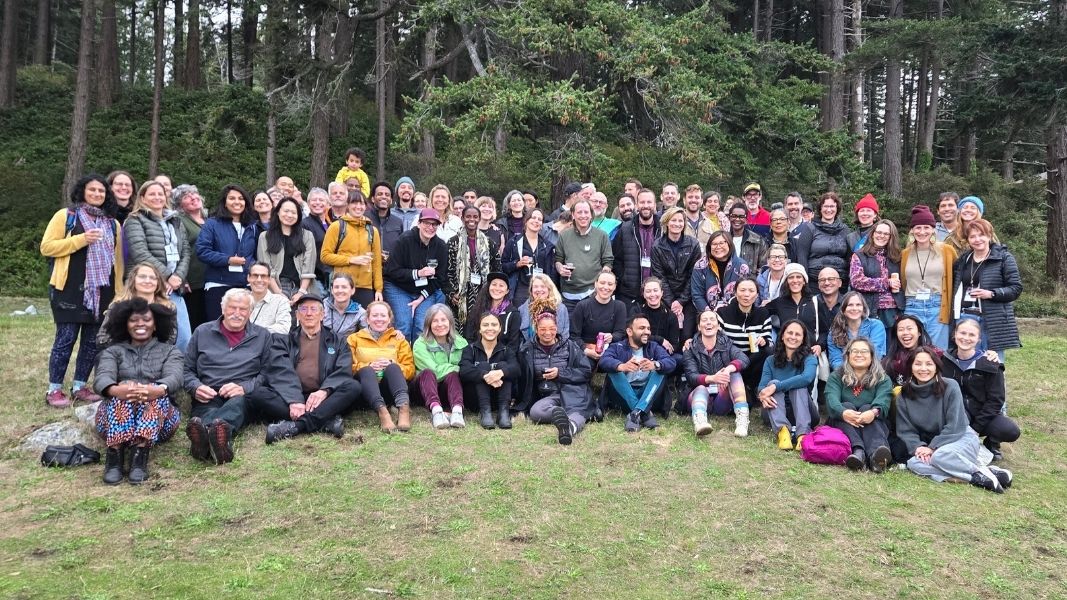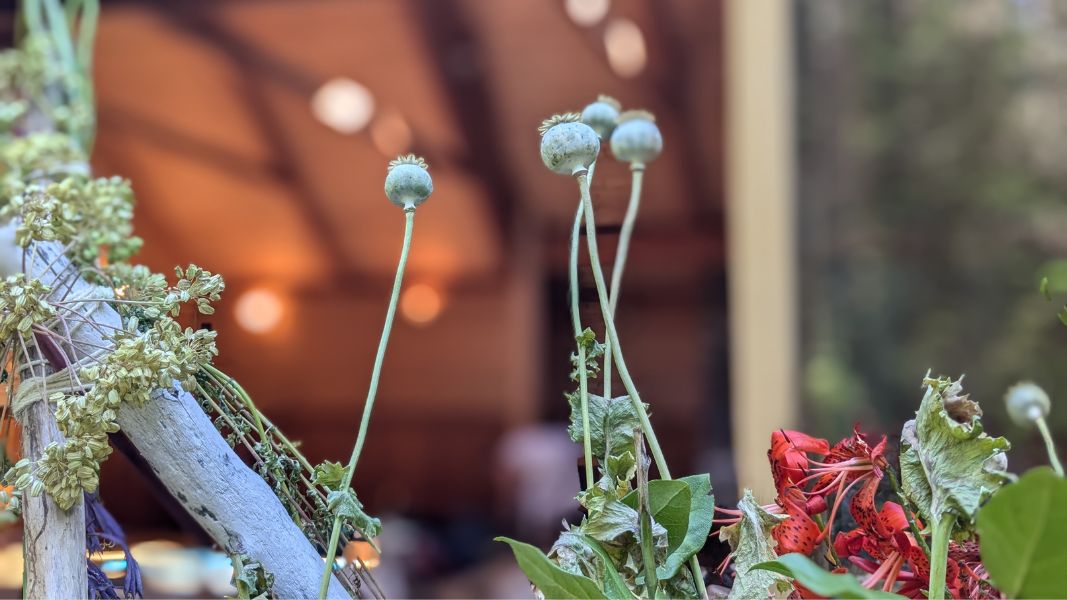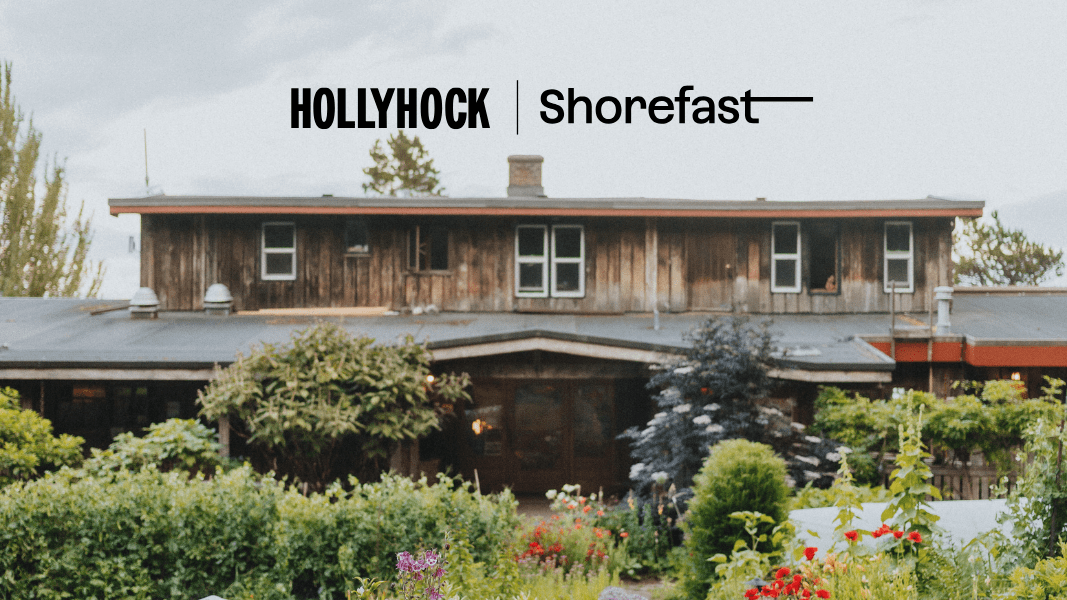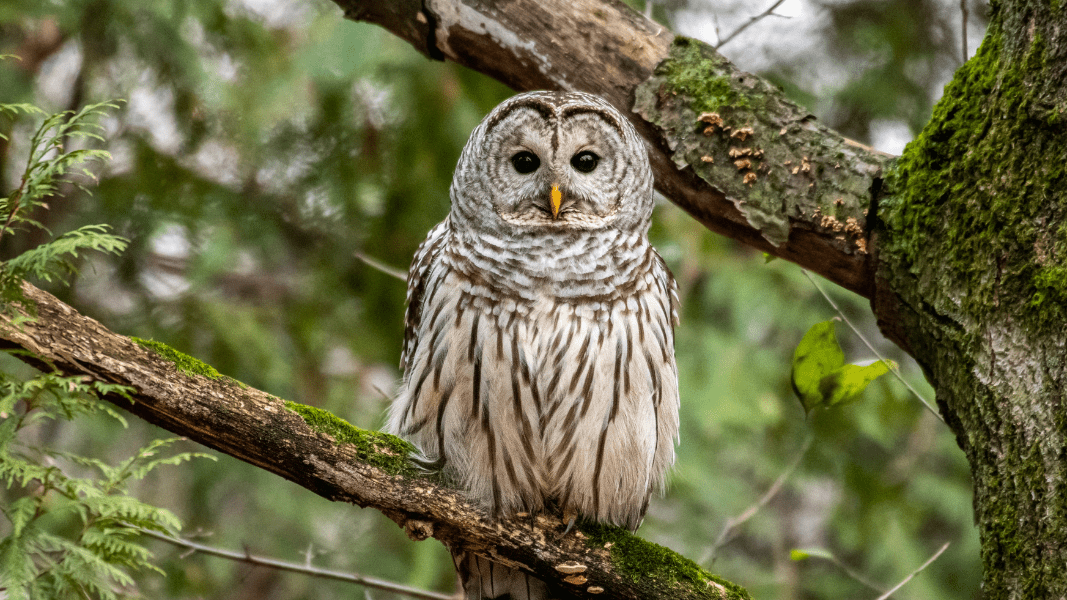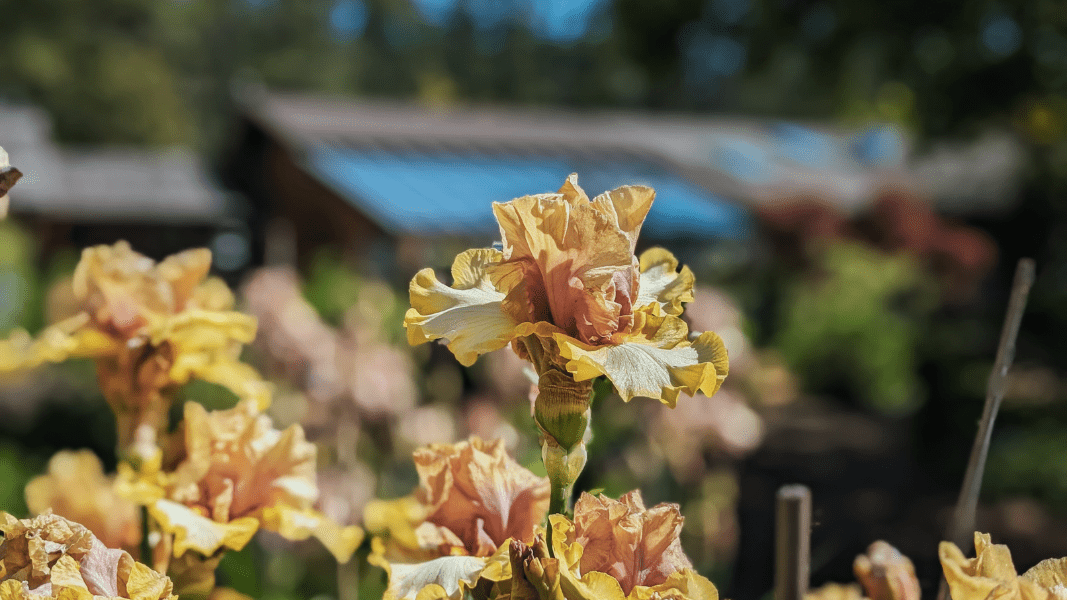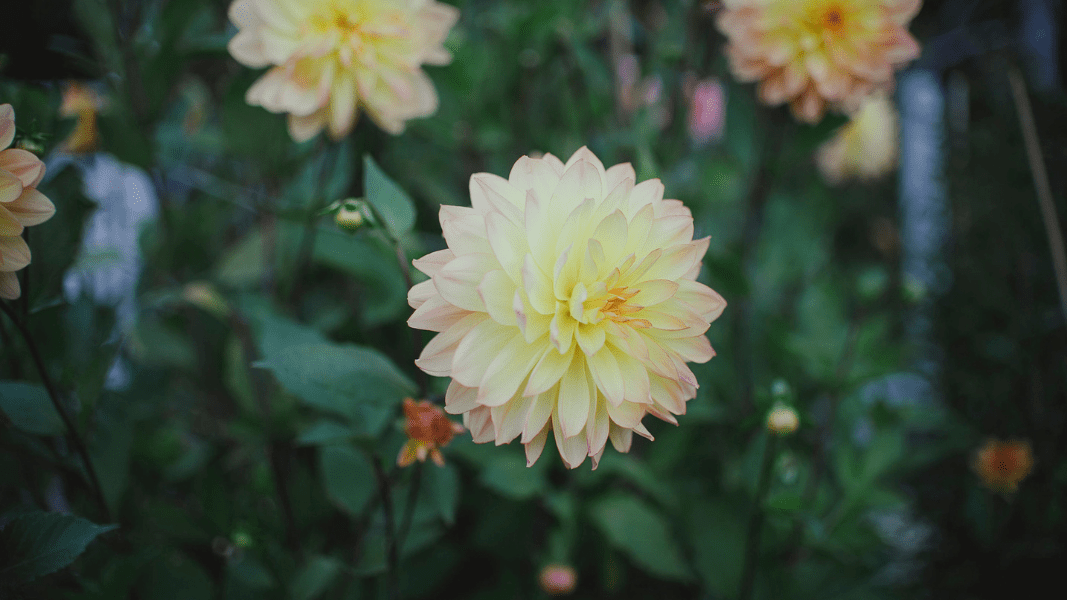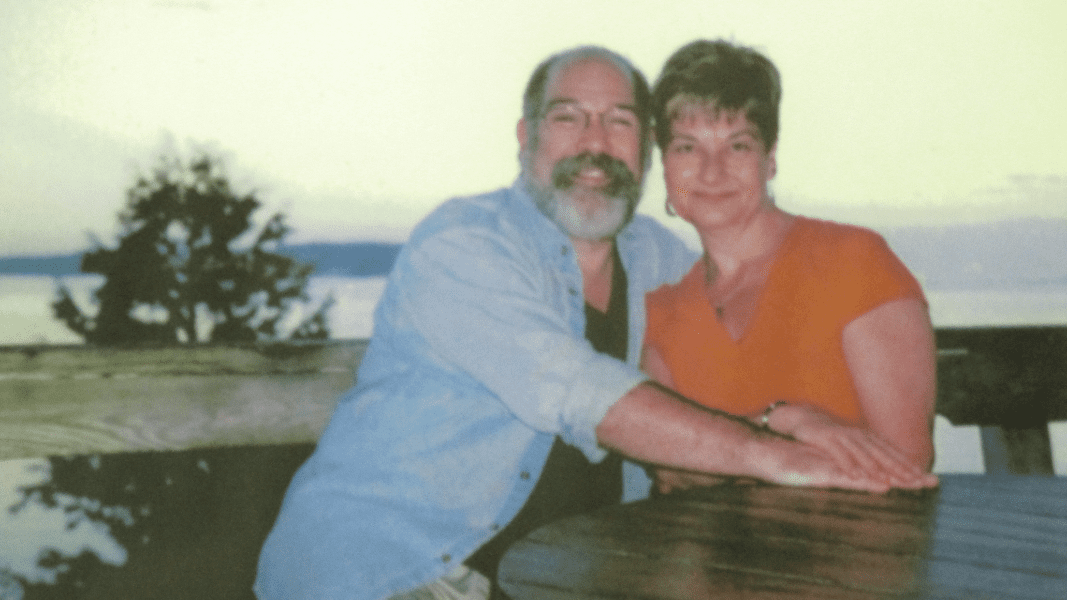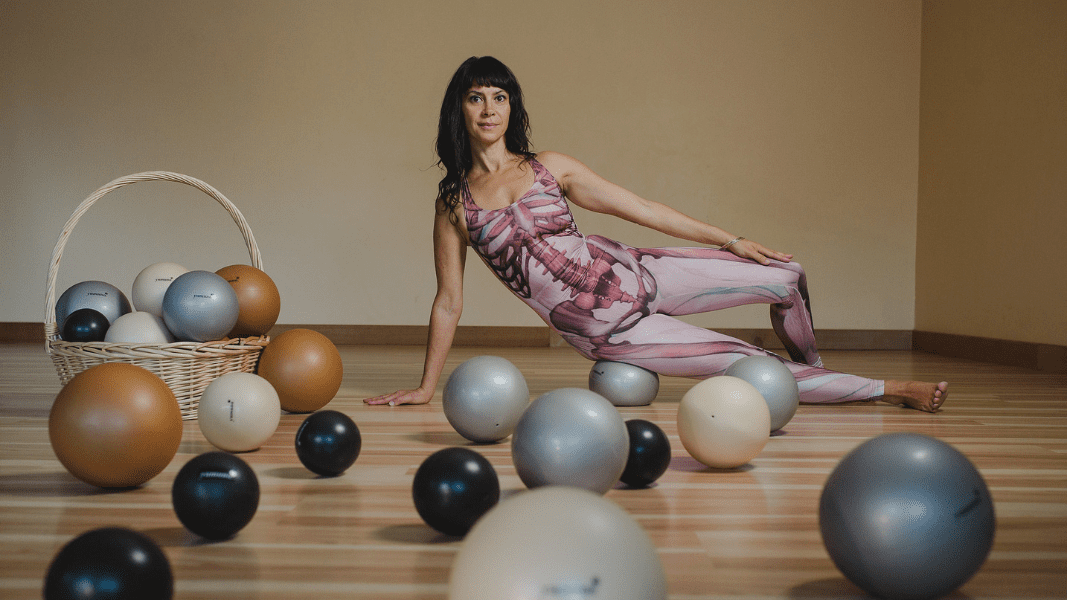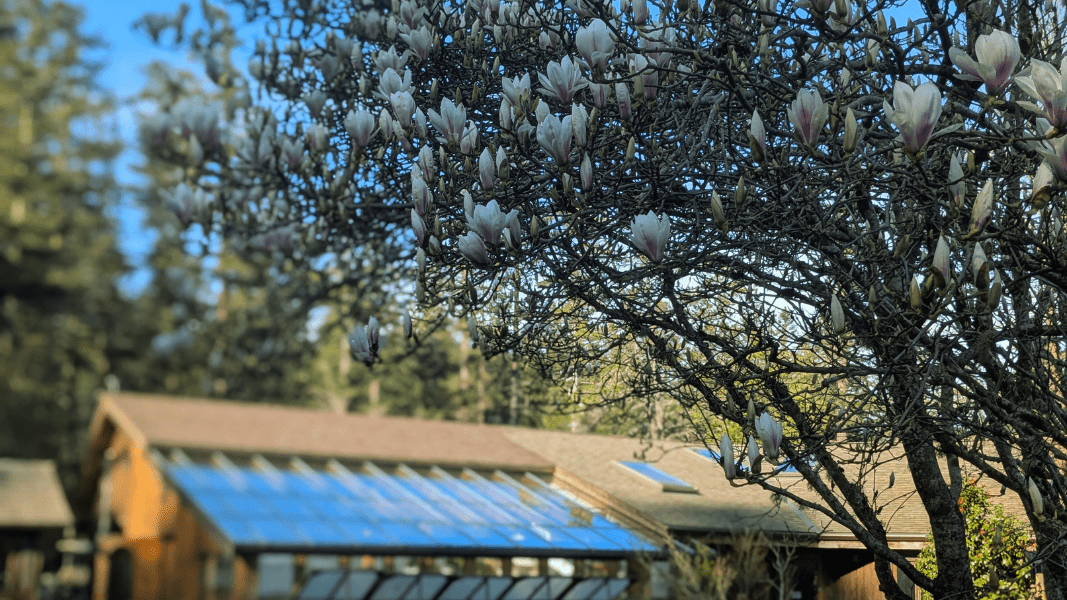This article is a transcript of a speech I delivered in May 2018, at the Tending The Threshold event in Ashland, Oregon, and originally published on my website blog at carmenspagnola.com.
For more musings about humanity’s plight to address large-scale cooperation dilemmas, listen to my podcast mini-series featuring my Tending The Threshold co-facilitators Holly Truhlar, Aftab Erfan, Desiree Adaway, Bayo Akomolafe, Tannur Ali, Aaron Ortega, Donnie Maclurcan, Rachael Rice and Bec Stupak.
My name is Carmen Spagnola. I’m a fifth generation Canadian settler of Scottish descent belonging to Clan Graham of Tullich-Delny and Clans Mackenzie and Ross from Inverness.
I’m very privileged to live on the land of the Lekwungen-speaking people, The Songhees and Esquimalt First Nations, commonly known as Victoria, BC.
“Huych’qa”
“Thank you”, I say in their language. Huych’qa for welcoming me here on the traditional lands of the Takelma and their ancestors.
I’ve mentioned my blood lineage. But it’s been said we have three lineages: our Blood Lines, our Milk Lines and our Story Lines. I’d like to acknowledge my Milk Lines, those whose ideas have fed and nurtured me and shaped how I’m showing up and sharing today.
What I’m sharing is the work of my teachers, Diane Poole Heller, an innovator in the field of somatic trauma resolution and attachment repair; and her colleagues, Peter Levine, Stephen Porges, Stan Tatkin, Gordon Neufeld and Bonnie Badenoch, and also my Clinical Supervisor and mentor, Patti Elledge; and I am sharing the work of archeologist, Marija Gimbutas, and scholar, Charlene Spretnak.
And now my Story Lines.
I lead wilderness rites of passage. Rites of passage are described most simply as having three parts, the Severance, The Threshold and the Return. All through my training I’ve had a special fondness for the word, “threshold” because the etymology is so illuminating.
The “threshing hold” is the place where the wheat is separated from the chaff. It’s a trough in the floor at the barn door, where the best light is, so that when you bash the sheaves of wheat, the grain collects below to be gathered.
So here we are, at the place where things are battered, and where we collect, contain and hold precious things.
When I think of humanity at a threshold, I think about large-scale cooperation dilemmas like climate change and social justice work and conflicts and how there are so many needs at so many scales.
And let’s be clear: they are dilemmas, not problems.
Problems have solutions.
Dilemmas are problems for which there is no solution, only response. We can’t fix them, we just have to live with them. But how we live with them is up to us.
We probably can’t fix large-scale cooperation dilemmas. If they could be fixed, we’d have licked ‘em by now.
I know that’s an uncomfortable and challenging notion. Especially if you disagree with me. This weekend we’re going to learn to ride out that discomfort.
The dilemma as I see it, is that we have the we have the ideas and we have the technologies, but we don’t have the social bonds required, nor the somatic skills required, to even have conversations about these dilemmas.
What I’m going to talk about today are the roots of the challenges we face, at the personal level and the cultural level, in developing our social bonds and somatic skills. And at the end of my time, I’m going to share with you specific somatic skills we can practice with each other.
Because we don’t just show up to conversations about large scale cooperation dilemmas with our rational thought and research, do we? We bring passion. We bring history. We bring strongly felt feelings and firmly held beliefs.
And those show up in our affect; the signals we send to others with our tone and body language and micro-expressions.
But we have to learn to self-regulate – to maintain contact with an Inner Stable Self – even as our identities, beliefs, feelings, knowledge, and preferences are challenged.
When we do, we’re more able to help others maintain their contact with their Inner Stable Self, too.
That is what I believe we must learn to do in order to live at this Threshold together.
When I think of how we got to this threshold, I’m reminded of the Myth of Pandora’s Box.
In the version we know best in our Western white-dominated culture, Pandora is the young woman who knew she was supposed to be careful, but didn’t listen.
The myth is actually a Creation myth. It’s about how the World and Man and Woman were made.
Actually, it begins with Prometheus stealing fire from the gods and distributing it to humans, which of course made them more god-like; fire representing magic, power, transformation.
And in punishment for this, Zeus sent him …Woman.
And Zeus gave this woman, Pandora, a dowry in a jar, (not a box). But she and Prometheus were cautioned by others that they should probably not trust the vengeful Zeus, since Prometheus had, after all, totally jacked him over.
But Pandora was seized with curiosity. And one day, she slipped off the lid of the jar and out came All Of The Evils Of The World. She quickly put the lid back on but the only thing left in the jar was…Hope.
Thus, with the arrival of the first woman, Misery Made Its Appearance On The Earth.
Now, Thomas Bullfinch says there’s another version where Zeus’ gift is actually in good faith and the jar contains all the blessings given to the couple by the gods. But Pandora carelessly opened the jar against her husband’s orders and all the blessings escaped.
Bullfinch claims this version is more probable: for why would hope, “so precious a jewel as it is, have been kept in a jar full of all manner of evils?”
Why, indeed, Thomas…
James Hillman, the celebrated Jungian psychoanalyst, had a famously antagonistic relationship with the concept of Hope. He said,
“Hope is a force of life and a fundamental deceit.”
Hope is in the box because it’s an evil of the world! Hope is in the box because it’s kissing cousins with Denial, Complacency, and Naivete.
Hope creates a future-orientation that distracts us from what needs to be done here and now, in the present.
The saying, “Hope is not necessary to proceed”, is widely attributed to the Dutch who suffered so horribly under the Nazi occupation in WW11. They say 70% of the Jews in that country were killed. Families, friends, lovers, children, home, land, culture – all gone.
But even that story has a story underneath.
It was actually William of Orange in the 15th century who said,
“It is not necessary to hope in order to act, nor to succeed in order to persevere.”
Back to our Story Lines.
The myth of Pandora is really about Prometheus taking what he shouldn’t have.
But the story been recast.
How did that happen?
Well, let’s trace it: the Greek version of the myth was popularized in oral-poetic tradition sometime around 1700BCE.
BUT there is an even earlier version of the myth that likely has roots as early as 10,000BCE and evidence points to even 23,000BCE.
It’s actually a much older story than the one we’ve just heard, and not only that, it was held and told for a much longer period.
How did we lose our memory of the older version?
Well, around 4000–3000BCE, in the area of the fertile crescent, humans found themselves at a threshold.
They were living in the transition time when agrarian matristic cultures and nomadic patriarchal cultures began to both conflict and cross-pollinate. And this threshold lasted over a thousand years.
Because the matristic cultures were agrarian, they were very oriented towards the cycles of life: the moon and fertility cycles, seasonal cycles, and therefore the birth-death-regeneration cycle.
And when I say “matristic”, that doesn’t mean “women in charge”; it was actually a roughly egalitarian society. I mean the primary deity was female because they observed that females could become pregnant and give birth, just as the seed is nurtured by the earth.
And they could bleed every month and not die, like the foliage falls in autumn and comes back to life each spring.
And in honouring the bleeding time, there’s also a reverence of the dying time, and of death, and of those who caretake the dying, and psychopomps who midwife the dead…
Because the belief was that you needed to end in a good way in order to ensure regeneration; you need good compost for the next good harvest.
Side note: I want to acknowledge that this worldview is of course is different from many non-Proto-Indo-European cultures, where very often the primary deity is unisex and reproduces asexually, like cells do. This is not the only story.
What happens in this period are several waves of invasions by warrior tribes from the North and from the Central Asian Steppe, who worshipped not earth-born, but sky gods. They believed in linear time, which makes a lot of sense if you’re :
1) Always on the move so you need to hunt or steal your resources, (you’re not thinking about next season, you’re thinking about killing your next meal).
2) You discover that it’s quite efficient to conquer, colonize, and dominate those who do gather resources so you don’t have to live hand-to-mouth anymore.
That in a nutshell is the origin of our salvational sense of progress.
That’s supremacy.
That’s capitalism.
That’s how Pandora’s story is perverted, recast and taken over in the interest of dominance and power.
Now.
Let me tell you the real story.
Let’s collect, contain and hold the precious thing.
A very long time ago, so long ago that there are very few remembered names, there was an Earth-Mother Goddess named, Pandora.
Her name means: “Giver of all gifts”.
Pan = all
Dora = from doron
Which means “to gift”.
Pandora had given mortals life. But there was nothing else. And so they came to know hunger…not just for food, but for experience.
One day the earth quakes and arising from the crest of a hill is Pandora, and she has with her a pithos. More than just a jar, a pithos is very large – they can hold up to two tonnes. It’s huge.
She removes the lid from the pithos and takes out a pomegranate, which becomes an apple, which becomes a lemon, which becomes a pear, and so on.
She brings forth all the fruiting trees including the gnarly olive and the grapevine to sustain them.
Then she pulls out handfuls and handfuls of seeds which she scatters over the hillsides and creates the plants for eating and weaving and medicines, and so forth.
And she tells them that beneath her earthly surface there are minerals, ore, and clay they can style into an endless array of forms, both functional and beautiful.
And she takes from the pithos two flat stones: flint.
She says, “Be careful with this simple but special gift, because it gives you the power to make fire and responsibility for it.”
(It’s a gift. They don’t have to steal it or even earn it. It’s a gift.)
Then Pandora tips over her pithos and out flows all of her Grace: all of the wonder and curiosity and mysteries to ponder, wisdom and seeking, love + justice + mercy, family and communal bonds and obligation to them including kinship with plants and animals.
And Courage, Strength, and Endurance, and the situations that call for them.
Courage, Strength, and Endurance are the gifts.
And the situations that call for them.
In our lifetimes, the situation that calls for these gifts is the dilemma I spoke about: multiple large scale cooperation crises – urgent and imminent – and we don’t even have the social bonds required, or the somatic skills, to even have good conversations.
Let’s move to the HOW part; how do we develop our social bonds and somatic skills so we can move towards deeper connection?
We must understand the importance of Co-regulation.
Co-regulation means: I get calm and regulated, and help you become more calm and regulated, and we track each other.
We help each other maintain contact with our Inner Stable Selves, even and especially when we’re under stress.
Co-regulation happens through Attunement.
But I’d like to mention a layer of complexity that comes up in the Attunement step called Attachment.
When we start to Attune, we might be a little surprised by what comes up.
And when we step into collective space and challenging stuff comes up…when we become dysregulated because we’re experiencing inner friction or with someone else…often what sidles right up alongside those feelings are the residues of some old Attachment Injury.
It flares up, just like arthritis.
Now Attachment isn’t whether I like you or not, and it’s not personality-based. It’s about our physiological response to others.
It’s about, How comfortable do I feel moving toward you or away from you or signalling the desire to do so, and how long can I comfortably stay in contact before wanting to move away?
It’s about trusting that in relationship, I’ll be safe, secure, seen and soothed.
My teacher Diane demonstrates it this way:
We have two really important systems that are equally necessary to keeping us alive:
A) our Survival System, which is our Fight-Flight-Freeze response system.
B) our Attachment System, which is our ability to Thrive In Tribe – in families and bonded communal cultures.
But if we reach out and our needs aren’t met, our Attachment System contracts and our Survival System kicks in.
It’s like a Shield Wall goes up.
When our Survival System is engaged, our Attachment system can’t function properly.
So we need to dissolve the threat in order to restore our natural, latent bonding instincts.
Sounds good in theory, right? But how do you DO IT?
How do you stay regulated when everything in you wants to defend or disappear?
Well, it involves connecting our central nervous system with our enteric nervous system, our cranial brain with our gut brain, our explicit and implicit awareness.
But what works for one person, isn’t necessarily going to work for someone else, because it depends on our Attachment Style.
Now, I only have time to give you the most superficial overview of Attachment Styles…so this part might feel like eating just. one. chip. Not enough.
But that’s what the breakout sessions are for – we can go deeper in the afternoon.
For now, just remember that Attachment adaptations are acquired in infancy and they involve mirror neurons.
Mirror neurons enable attunement, they enable empathy, and they enable the inner felt sense of, I feel you, and I feel what’s going on for myself.
A baby’s mirror neurons are developed by scanning and sensing what their Parent is modelling.
BTW, it doesn’t have to be a parent – just a Parenting Presence, like a grandparent or caregiver.
And while you’re listening to all this stuff about Attachment, I invite you to keep a parallel stream of awareness in which:
The Parenting Presence in society and collective spaces isn’t a person, it is the Overculture in which we find ourselves.
Overculture meaning: the dominant society, or community, or group we’re relating to, whose customs and social mores are normally followed. It’s the opposite of subculture.
And, if you don’t feel like re-hashing your childhood right now, just focus through the lens of Overculture.
Back to babies.
If the Parenting Presence is well attuned to the baby, not only will the baby’s needs be met, but the baby will also learn to discern their own preferences and needs and express them in calm, well-regulated ways.
Because babies don’t come into the world understanding their own needs.
They need a secure attachment figure with their own healthy enough Attachment System – a healthy enough neuropsychobiological social engagement system – to activate the mirror neurons in the baby’s brain. It’s a brain-to-brain ecosystem of learning.
So, for example: a baby’s distressed. Signal cry! Signal cry!
The Parenting Presence comes in and says, Oh, of course you’re hungry, it’s been three hours since you’ve eaten! Feeds the baby. Baby feels better. Baby’s like, Oh. Hungry, not hungry. Ok!
Half an hour later: Signal cry! Signal cry!
Parenting Presence comes in and says, Oh, if course you’re uncomfortable, you’re diaper’s dirty. Baby gets cleaned up. Baby’s like, Oh. Shitty, not shitty, Ok!
But what happens if the baby sends out a Signal cry and the Parenting Presence responds with misattunement?
What if the baby’s needs are not well met and matched?
Well, the baby develops an insecure attachment style that falls somewhere on a spectrum between Avoidant, Anxious or Disorganized.
Let’s say the Parenting Presence comes in with a critical expression, or is cold. Like, they’re physically there but just for the tasking. Then the baby can develop a more Avoidant Attachment style. They learn they can’t depend on others to meet their needs, emotionally or otherwise. They’re like, There’s no point in even having needs because I’m going to have to take care of them myself.
They become hyper-independent. Of course, they still have needs because all people do. They just turn the volume on their Need Signal waaaaay down so they can’t hear it.
As adults, they fill their life with tasks instead of relationships because people are such a hassle because they’re so needy.
And let’s be honest, sometimes folks with an Avoidant style have a bit of a brush off contempt for people who just can’t get their shit together.
(I’m a Recovering Avoidant. So I can say that.)
Now, people with a more Anxious attachment style have their Need Signal turned waaaaaay up.
Their Parenting Presence somehow missed the mark with attunement. So for instance, the baby’s signal crying and the Parenting Presence comes in to play with toys, but what the baby craving was to be held.
It’s not that they never had their needs met, but it was inconsistent or inadequate.
As adults, even when their needs are met, it can still trigger their chronic expectation of disappointment.
They’re like, Oh you’re loving me right now and it’s so good I can never get enough! Please give me more! Give me more! Because you’re going to take it away soon, aren’t you?
Unconsciously it’s like they feel if they don’t keep their signal cry on, they’ll die.
In adults, the signal cry can show up as verbalization. Like, we have to talk everything over and re-hash and process for hours. Or it can be complaining. Chronic dissatisfaction and a need to tell everyone about it: that’s signal cry.
Now, if the Parenting Presence is frightening, or abusive, or chaotic, it sets up a double bind. The baby can’t use their parent to soothe because the parent is the source of fear.
You’re being nice to me in this moment but I have to keep my guard up because you might flip out over some small thing, but now you’re pulling away from me so I better be on my best, most ingratiating behaviour and make you love me so I’m not a target later.
There’s never any ease in this.
This baby is set up to develop a Disorganized attachment style; they’re running Avoidant andAnxious at the same time.
And they can have serious self-regulation problems.
But ANYONE can fall into a pocket of Disorganized attachment behaviours – even Secure People.
If we experience a shock trauma, or a devastating loss, or a great challenge our identity, anything that really disorients us can thrust us into a period of Disorganized attachment…I think a lot of us have been running a bit Disorganized pattern since November 2016.
But we can earn Secure Attachment.
And what does Secure Attachment look like in practice?
Securely Attached people have a basic trust in themselves and others. They can self-regulate. They’re well-attuned to others, can stay present with vulnerability, and know when the connection feels off. They can initiate and receive repair attempts. Their radar for danger is functional, not hyper-vigilant, not too lax. They address conflict directly. And they seek to protect others from harm, even if they’re the ones causing it.
This is how we help people feel safe, secure, seen and soothed.
This is how we co-regulate each other.
THESE ARE REALLY HELPFUL SKILLS WHEN DEALING WITH LARGE SCALE COOPERATION DILEMMAS.
I’m telling you all of this Attachment stuff because of Pandora…because our attachment injuries in many ways mirror and reenact the original losses we experienced when our stories and ways of being were stolen, distorted, colonized, perverted, erased, diminished and pressed into the service of dominance.
What these threshold times need are the gifts of Pandora: Courage, Strength and Endurance.
But our reactivity impairs our ability to collect, contain and hold them.
Our somatic experience is hijacked when we step into collective space because we have personal Attachment Injuries that are amplified by the Overculture.
And we need each other to help us become more regulated so we can tolerate shared space again.
Fortunately, Attachment style isn’t fixed.
It’s a state, not a trait.
It’s physiology, not personality.
Thanks to neuroplasticity, our Attachment style can change – hooray!
That should give some relief to all the parents who’ve been shrinking in their chairs listening to me…We can repair and re-pattern…and reconnect.
Maybe by now some of you are feeling some Hope.
Like, Oh! I’ve just learn some important information that if I just apply will help me avert suffering.
No.
Remember? All this is to help collect, contain and hold the gifts. There’s no averting. Not anymore.
One last quick story to illustrate.
I have a dear friend and elder named Michael. Michael’s in his eighties and I love him so much.
Think about someone you love so much right now. It could even be someone you don’t know, like Maxine Waters. Feel that?…Feel how loving and kind your eyes are right now.
That’s the feeling I have with Michael.
We’re both Quakers and we have a deep, spiritual friendship. We used to visit every other week for tea and conversation.
And now Michael is experiencing dementia.
And I gradually stopped visiting.
And I wasn’t attending Meetings for worship so much any more. But a few months ago, I did.
We were already sitting in silence as Quakers do, when Michael came in late. And he walked right through the center of the circle to find a seat which is a little…unusual for a Meeting for Worship, but it meant that he walked right in front of me so he could see me up close as he passed.
He breezed right past me, didn’t recognize me.
But suddenly, he swung around and looked at me straight in the eye. He leaned forward towards me with a huge smile on his face. And I totally did it back to him, like we could almost knock foreheads. (Mirror neurons in full effect!)
And then he carried on to his seat and I felt great sitting in silence for the rest of the Meeting.
And when we broke the silence, there was time for sharing. And Michael began and he said,
“When I was a young man, there was a very old man whose name…
Whose name…
Whose name I used to know.
And when I would approach him, he would look me in the eye and say with love and joy in his voice, “I remember you very well.”
Which of course, he didn’t, because he was very old and had a poor memory.
But he knew in his heart that he had remembered.”
And then Michael leaned forward so he could look squarely at me and he said,
“I remember you very well!”
***
There is no hope that Michael will ever fully remember me again.
But I can still collect, contain and hold the gifts of our connection.
These gifts are accessed through the wetness of our eyes, through the tremble and warmth of our voices, through our hugs, and the tea and quietude we share.
What fuels our relationship now is pure Contact Nutrition.
We humans get Contact Nutrition through:
1) kind eye gaze
2) expressive vocal modulation
3) safe touch
4) synchronized movement and shared rhythm (like rocking, singing, dancing)
5) ingestion behaviours (in babies it’s literally feeding them, in adults it’s having tea, or cocktails, sharing a meal.)
Contact Nutrition is how we Co-regulate.
It’s how we collect each other.
It’s how we attach.
It’s how we attune.
***
Now, my time’s up and I’ve discharged a lot.
And I don’t want to leave you there with the taps wide open.
We need a chance to integrate so we’re well regulated and are able to receive what the next speaker, Desiree, will share.
So we’re going to do a quick exercise together to Co-regulate.
Now, our Attachment System and our Survival System are connected through our nervous system.
And I totally want to tell you all about this one very important nerve, called the Vagus Nerve that connects our cranial brain to our gut brain.
But I don’t have time. (BREAKOUTS!)
So we’re just going to go ahead and improve the functioning of that nerve right now. And I’m going to warm up your mirror neurons by demonstrating first.
It’s really simple and it comes from Peter Levine’s work. All I’m going to do is hold a “VU” tone for as long and as low as I comfortably can.
This is a beautiful ritual to do daily to increase your vagal tone.
It’s been said that “ritual is poetry in the form of action”. Like poetry, this ritual will circumvent your conscious mind and a lot of the barriers between your head and your body.
Before I start…
Avoidants: I know…I resisted doing this kind of touchy feely shit my whole life, because I wanted to be on the winning team! And we don’t do freaky weirdo look-at-me-I-need-love crap in public.
I know I can talk to you straight because you can handle straight talk, so I say this lovingly: just get over yourself. I know deep down you’re afraid you won’t be really good at it on the first try. But see if you can give yourself permission to experience just a tiny little bit more connection right now and build up your tolerance for that a bit, ok?
And Anxious folks, I know you’re worried if the person beside you will like your voice or still think you’re cool…but please give your Self this tiny beautiful bit of reprieve from worrying about what people think. Just for three breaths.
And if you suspect you’re more of a Disorganized style, just watch and listen and track what’s happening in your body if you can…and if you feel flooded, just give yourself a break and check out. Go to your happy place. We’ll consider that Controlled Dissociation and that’s totally ok.
I’ll do it once by myself. And I’d like you to turn inwards and just notice how it affects you. Track yourself.
(VUuuuuuuuuuuuuuuuuuuuuuuuuu)
Now, when we do it together, we’re all going to end at different times depending on our breath. But if you finish before me, just wait for me before you start again. Let’s try to synchronize our sound so we have the Contact Nutrition of shared rhythm.
I’ll take an exaggerated inhale at the beginning of each tone so you can time yourself to me, ok?
Let’s do it. The lowest note you can hold. Here we go.
(VUuuuuuuuuuuuuuuuuuuuuuuuuu)
Soften the muscles of your legs.
(VUuuuuuuuuuuuuuuuuuuuuuuuuu)
Soften your face and jaw and tongue.
(VUuuuuuuuuuuuuuuuuuuuuuuuuu)
Collect, contain, hold the gifts.
Thank you.
Join Carmen Spagnola and Ruben Anderson for Ritual + Practice for the Urban Homestead on Cortes Island, September 28 – October 3, 2018

